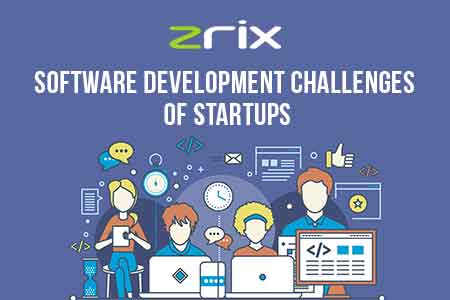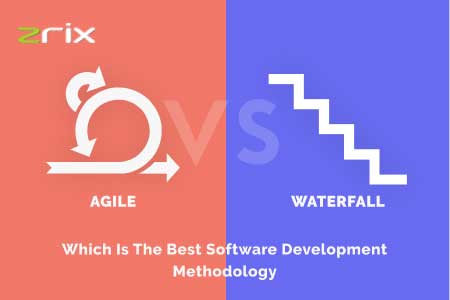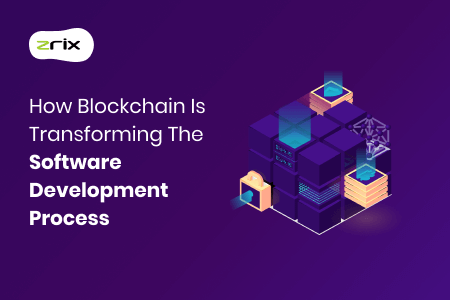Today, companies and organizations are increasingly becoming successful between the vastly changing customer needs. The credit of their success goes to the adoption of new software development methodologies.
In the current modern business environment, tech companies can remain relevant only when software development teams create more products in a short time frame. For this, they will have to use new methods of software development that are fast, reliable, robust, and result-giving.
One such method is Agile Software Development!
The Agile Software Development methodology is the quickest approach to rapid development and deployment of the business, enterprise, and customer satisfactory IT products.
Quick Navigation
AGILE methodology practices software development in a different way. Here, a software development team continuously repeats development and testing, concurrently within the development lifecycle of the software.
Agile Software Development - A Process Beyond Imagination!
If you go back to the 1960s, you will find the iterative and incremental methods of development and manufacture, while in the 1970s, you find solid guidelines based on project management approaches.
And in the 1980s, you get to know about a solid foundation of concepts, processes, and methods of software development. In fact, between 1970 to 1990, software theories, experiments, use cases, and practices of software development started. During that time, the Waterfall software development process was considered best.
But, 17 people changed everything in the software development industry from top to bottom!
Jon Kern, an aerospace engineer in the 1990s, was searching for something more developed, time-efficient, and responsive. From there came the idea of continuous integration, rapid development, and deployment.
And in 2001, Jon Kern with 16 other software developers in a meeting at a resort in Snowbird, Utah discussed the lightweight development method. Later on, this group of seventeen visionaries published the Manifesto For Agile Software Development Lifecycle.
That's how the Agile methodology was born!
Agile now is a synonym for the fast delivery approach and benefited in two ways:
Also Read: Agile vs Waterfall: Which Is The Best Software Development Methodology?
First, users got business benefits with the new fast working software. Second, a unique software development team established whose job was to decide the scope and direction of the software-based upon the rapid feedback of the customer.
Today, agility has got us to the fourth revolution in the software industry. And soon, we will write a new industrial story in automation & fast development.
Agile Software Development: Introduction
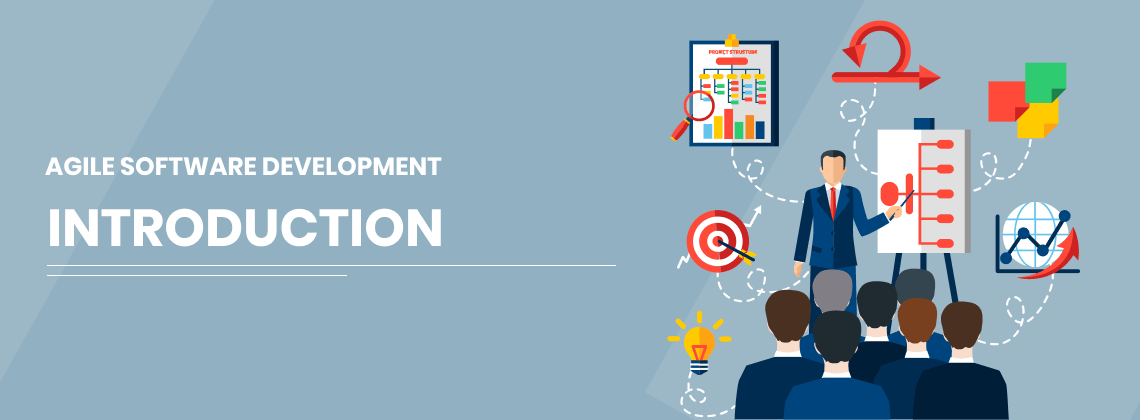
The agile software development process has various approaches in it to develop software based upon customer/end-user needs, project requirements, and solutions via a collaborative effort of different teams.
It recommends adaptive planning, next-level rapid development, quick delivery in less time, and continuous improvement with flexible responses to any change.
The agile SDLC is divided into sprints. Each sprint lasts for two weeks and produces a working product. Therefore, you can term every phase of the agile software development lifecycle as follows:
Concept, Inception, Construction, Release, Production, and Retirement.
What Is Agile Development Process Flow?

In big enterprises and business organizations, different projects of different clients run simultaneously at the same time. Thus, multiple sprints are formed, customer feedback is taken, different product lines are established, and the focus is put on business needs.
Basically, Agile development is a process to create a product quickly by completing sprints in the given limited time. The flow of the development process is as follows:
- Envisioning and prioritizing the project Concept
- Inception - Finalizing the fund/budget, designating a software development team, selecting development environments, and discussing the requirements.
- The development team uses Iteration/Construction methods to deliver working software.
- The software gets its first Release after QA testing, documentation development, and then the final release is made.
- Production - Ongoing support of the software
- Retirement - End-of-life activities, including customer notification and migration
The teams in agile development are so interlinked that they respond to any change in minutes, prepare new comprehensive documentation over the changes, and collaboratively work with the customer.
During an Agile software development lifecycle, multiple iterations take place, and workflow is positively monitored by the project managers at each sprint. In an agile development cycle, feedback from customers and business stakeholders is highly important.
Also Read: Software Development Challenges Of Startups In IT Industry
Requirements, Development, Testing, Delivery, and Feedback are typical iteration workflows in Agile SDLC.
How Agile Software Development Is Different From Traditional Software Development?
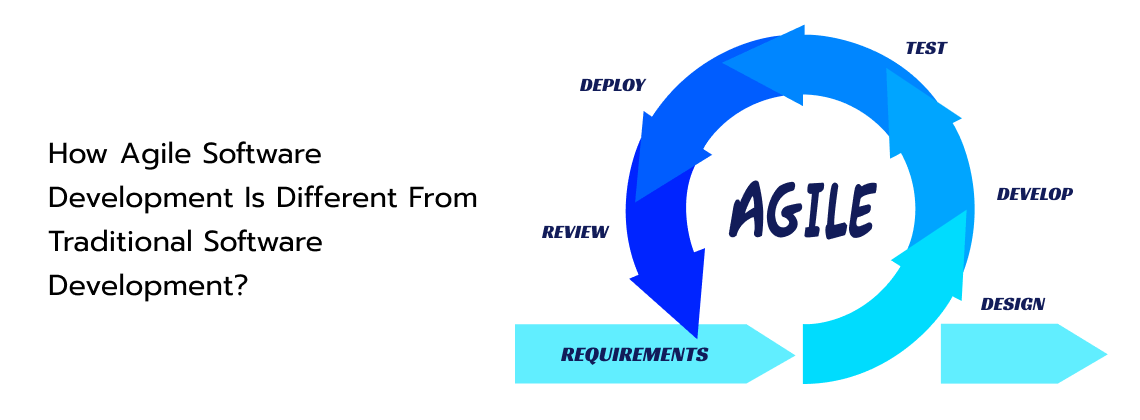
Traditional software development practice was carried out before the year 2001. But, the agile method is suitable where customers and project stakeholders provide better inputs resulting in quick development, and a flexible lifecycle.
There are a variety of Agile software development methodologies Adaptive Software Development, Agile Modeling, Kanban, Scrum, Scrumban, Extreme Programming (XP), & Dynamic Systems Development (DSDM).
For traditional software development, things were slow, light, and customers weren’t included. But, agile is far from these advantages.
Below we have compared traditional development vs. agile development:
|
Traditional Development |
Agile Development |
| Principles weren’t clear to clients and customers | It has working principles, manifesto, workflow, process, etc. |
| In a traditional development approach, all tasks were handled by a single team. | Task handling & task iterations in agile development is divided into sprints |
| The traditional approach was on the shoulders of one team | Agile development approach follows the cross-functional team interconnectivity. |
| Customer involvement is zero in traditional. | Customer involvement is more in agile. |
| Speed of completion is less traditional. | Speed of completion is rapid in agile |
| The traditional development approach used to take decades in making complex systems. | The agile approach can quickly give you complex systems. |
| Traditional takes more time, thus increasing the budget. | Agile takes less time to develop software and is more cost-effective. |
Fast delivery of software products and customer satisfaction due to agile is greater when compared to 20 years old software development methodology. Hence, it will not be wrong to say that agile development makes customers smarter with fast-changing technologies.
8 Benefits To Developers and Customers: Stakeholder Engagement, Transparency, Early and Predictable Delivery, Predictable Costs & Schedule, Allows for Change, Focuses on Business Value, Focuses on Users, and Improves Quality.
This is the reason why today’s top custom software development company in USA prefers using good tools for agile software development lifecycle.
Is Agile The Demand of Today's Software Culture?
Nobody wants software in today’s tech-rich world that has lots of bugs in it, performs slowly, causes issues, and creates a lower rate of customer satisfaction.
If you also don’t want such software around you, the Agile development methodology is your messiah - the savior! With the help of continuous integration, continuous development, and quick deployment, the Agile approach gives you the best software development strategy.
Today, 80% of organizations are looking forward to adopting Agile, out of which, more than 30% are currently in the process of implementing.
The followers of the Agile approach have grown tremendously, and many software companies are using its principles, and work method in software, website, and application development.
Building a culture for new technology in an organization takes time; one cannot develop it haphazardly! It is learned, practiced, implemented, shared with customers, and becomes a part of the company.
Agile for sure has a great role to play in the software development industry. With this methodology, companies + customers + clients can create better IT products, can fasten the decision making, improve the customer experience, and make the project cost-effective.
Agile means building a great software development culture within your business organization!

